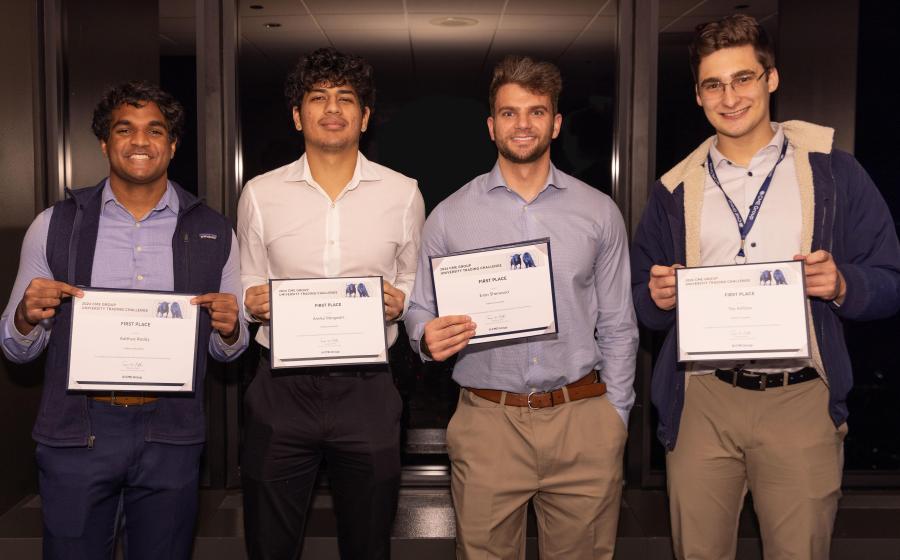From Absence to Engagement: How Student Leadership is Turning the Tide
(NewsUSA) - Across the United States, schools and families are grappling with a troubling rise in chronic absenteeism among students. Chronic absenteeism, defined as missing 10% (18 days) or more school days, has grown significantly since the COVID-19 pandemic. During the 2022-2023 school year, nearly one in three students was chronically absent, with even higher rates for students with disabilities, students of color, and students learning English as a second language.
- Across the United States, schools and families are grappling with a troubling rise in chronic absenteeism among students. Chronic absenteeism, defined as missing 10% (18 days) or more school days, has grown significantly since the COVID-19 pandemic. During the 2022-2023 school year, nearly one in three students was chronically absent, with even higher rates for students with disabilities, students of color, and students learning English as a second language.
Chronic absenteeism, largely driven by student disengagement, has serious implications for academic success. When students feel disconnected from their school, they are less likely to attend, and their academic performance suffers as a result. Chronically absent students are more likely to fall behind in their studies and are four times as likely to drop out of high school.
To address this, superintendents, principals, and educational administrators are exploring innovative strategies to foster a stronger sense of belonging at school and boost student engagement.
Igniting Peer Leadership to Boost Engagement
Many schools have discovered that mentorship programs, peer-to-peer relationships, and social-emotional learning initiatives can help students feel more connected to their school communities and improve attendance rates. By leveraging one of the most underutilized resources in schools—students themselves—through peer mentorship and leadership programs, school communities are able to cultivate supportive, caring environments that motivate students to attend and engage.
One organization, Center for Supportive Schools (CSS), has seen success with its Peer Group Connection (PGC) program, which fosters peer leadership and mentoring. This program has proven effective in boosting attendance and engagement across grade levels.
“Chronic absenteeism continues to be an ever-present challenge, but it’s not one schools have to face alone,” shares Center for Supportive Schools Chief Executive Officer, Dr. Jonathan Mathis. “By empowering students as leaders and mentors, we can foster engagement, connection, and belonging. Through peer leadership, schools can build a strong culture where every student feels supported, motivated, and ready to succeed.”
In a 2018 study of more than 8,000 students, CSS found that those who participated in PGC attended school an average of six more days than students who did not. A year after completing the program, participants attended between 2.4 and 7.8 more days of school than their peers. “My peer leaders motivate me to get better grades and to keep coming to school,” shared one PGC participant.
By encouraging students to take on leadership roles and strengthening peer relationships, PGC helps students develop a stronger sense of identity with their school community, leading to improved academic outcomes. Additionally, the program equips students with valuable leadership skills that will serve them well after graduation.
Elevating Student Voices to Foster Belonging
Another CSS program, known as When Students Lead (WSL), empowers groups of peer advocates to conduct research, identify pressing issues within their school community, present solutions, and implement student-led campaigns to address those issues.
This program helps students feel more connected to their peers and their community by giving them a leadership role on issues that matter most to them. It also fosters important leadership skills, including research, data analysis, critical thinking, collaboration, negotiation, problem-solving, and decision-making.
Making A Lasting Impact on the Next Generation
The evidence is clear: when we empower students to lead, connect, and support one another, their attendance and performance improve. By implementing peer-to-peer programs, schools can reduce chronic absenteeism while creating a stronger sense of community, improving student outcomes, and providing students with crucial leadership skills that will benefit them throughout their lives. For more information, visit www.supportiveschools.org.



 - Spring break often reminds families of the approach of summer and the need to find the best summer camp experiences for their children. Whether a child is entering kindergarten or transitioning to middle school, there’s a camp to suit their interests and needs, as well as those of their parents. It can be hard to sort through the many options (and price points) available to determine what’s best for each child.
- Spring break often reminds families of the approach of summer and the need to find the best summer camp experiences for their children. Whether a child is entering kindergarten or transitioning to middle school, there’s a camp to suit their interests and needs, as well as those of their parents. It can be hard to sort through the many options (and price points) available to determine what’s best for each child.
 - Fifteen years ago, I made a life-changing decision: leaving my home country of El Salvador for America. Like so many immigrants, my goal was to provide more opportunities for my family. That journey, while challenging, shaped my path as an advocate for education and a voice for Latino families.
- Fifteen years ago, I made a life-changing decision: leaving my home country of El Salvador for America. Like so many immigrants, my goal was to provide more opportunities for my family. That journey, while challenging, shaped my path as an advocate for education and a voice for Latino families.
 - What would you do if you felt your child´s school wasn't helping them reach their full potential? For a growing number of parents, the answer is to look for alternatives.
- What would you do if you felt your child´s school wasn't helping them reach their full potential? For a growing number of parents, the answer is to look for alternatives. 
 - Fifteen years ago, when
- Fifteen years ago, when 
 - More than 2.3 million workers were
- More than 2.3 million workers were
 - Baby Boomers hit peak retirement in 2024, according to the
- Baby Boomers hit peak retirement in 2024, according to the 
 - IU Students Prevail in 2024 CME Group University Trading Challenge
- IU Students Prevail in 2024 CME Group University Trading Challenge 

 - Over the past three years, 25 states have expanded school choice options, and families need accessible, straightforward information on how to access these choices. As we head into another school year, many parents are grappling with an important question: will my child be at the best school for them this fall?
- Over the past three years, 25 states have expanded school choice options, and families need accessible, straightforward information on how to access these choices. As we head into another school year, many parents are grappling with an important question: will my child be at the best school for them this fall?
 - Ongoing professional development for teachers is essential to meet the changing needs of today’s students, experts say, and further investment for teacher training is an opportunity to use remaining federal funds allotted to schools during the COVID-19 pandemic.
- Ongoing professional development for teachers is essential to meet the changing needs of today’s students, experts say, and further investment for teacher training is an opportunity to use remaining federal funds allotted to schools during the COVID-19 pandemic. 


